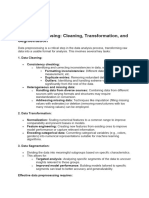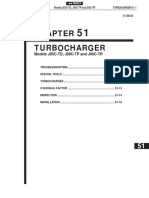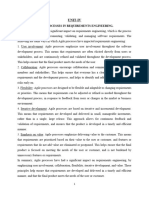0% found this document useful (0 votes)
8 views5 pagesSoln Architecture11.
The document outlines a solution architecture for improving data accuracy in CRM systems using AI and ML at KLS Vishwanathrao Deshpande Institute of Technology. It details the objectives, tools, and techniques for data visualization, preparation, anomaly detection, and AI model selection, emphasizing the importance of clean data for effective analysis. The project aims to enhance customer insights through advanced analytics and robust model implementation while addressing challenges related to unstructured data and real-time processing.
Uploaded by
SLAP 001Copyright
© © All Rights Reserved
We take content rights seriously. If you suspect this is your content, claim it here.
Available Formats
Download as DOCX, PDF, TXT or read online on Scribd
0% found this document useful (0 votes)
8 views5 pagesSoln Architecture11.
The document outlines a solution architecture for improving data accuracy in CRM systems using AI and ML at KLS Vishwanathrao Deshpande Institute of Technology. It details the objectives, tools, and techniques for data visualization, preparation, anomaly detection, and AI model selection, emphasizing the importance of clean data for effective analysis. The project aims to enhance customer insights through advanced analytics and robust model implementation while addressing challenges related to unstructured data and real-time processing.
Uploaded by
SLAP 001Copyright
© © All Rights Reserved
We take content rights seriously. If you suspect this is your content, claim it here.
Available Formats
Download as DOCX, PDF, TXT or read online on Scribd
/ 5






















































































